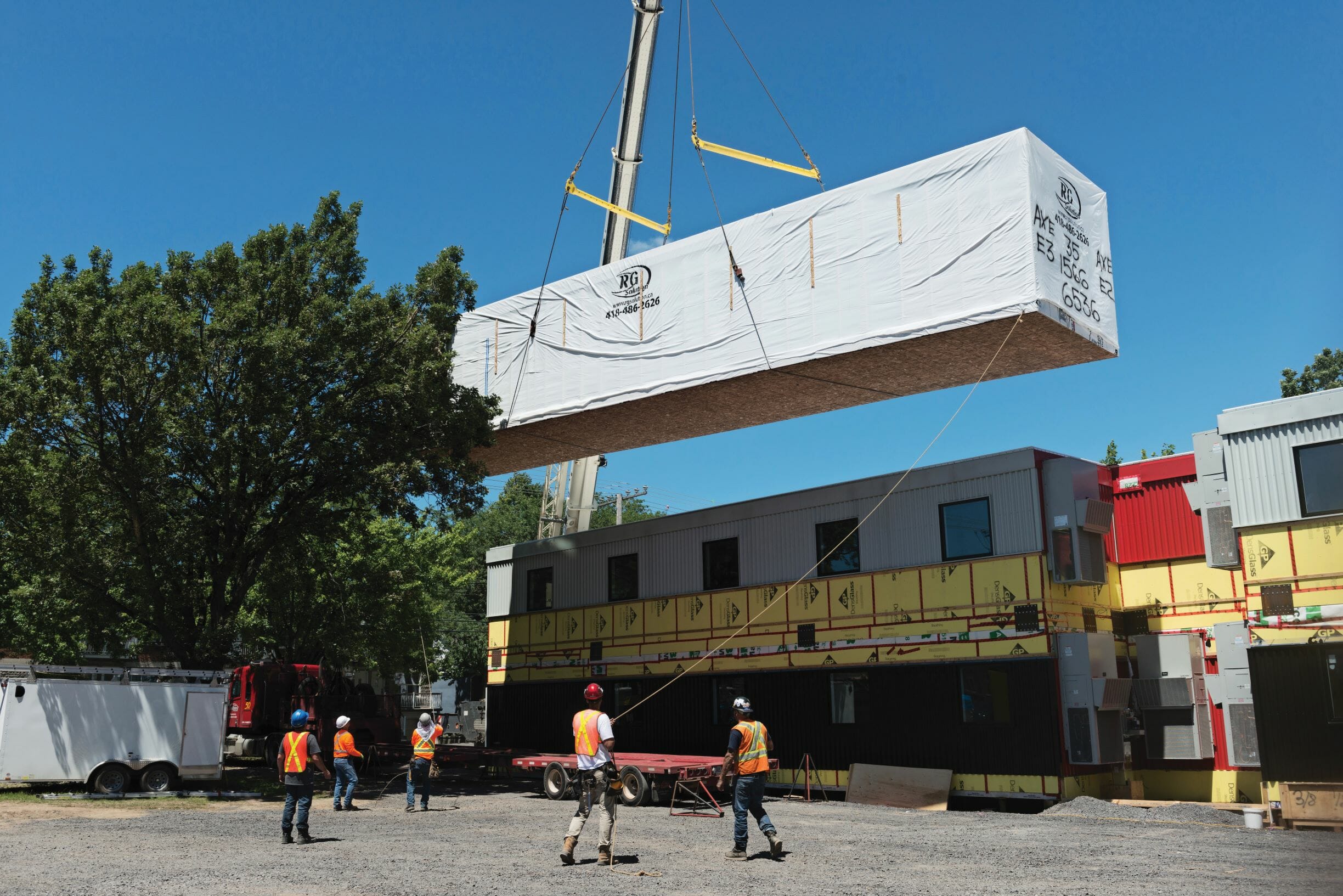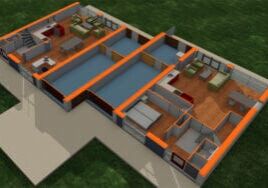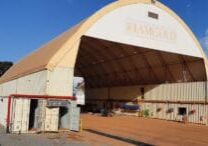Making the Leap: From Traditional General Contractor to Modular Builder
The Modular Building Institute estimates there are about 250 modular manufacturers in North America accounting for slightly more than three percent of all new commercial construction starts. With the construction industry gaining momentum, traditional general contractors (GCs) are not finding the labor needed to meet demand.

That’s one reason we are seeing more traditional contractors making the leap and turning to modular construction. In some cases, GCs are contracting with modular manufacturers on “hybrid” projects that incorporate the best of modular and site-built processes. In other cases, contractors are establishing their own prefab divisions as a hedge against this labor shortage.
PCL Construction, one of the largest general contractors in North America, created its “Agile” division about three years ago to move into the modular construction industry. MBI wanted to find out what drove PCL to this decision.
According to Terry Olynyk, Director of Business Development for PCL Construction, “The world of construction is rapidly moving towards the digital age and with that [so is] industrialized construction. PCL did not want to stay on the sidelines while this paradigm shift is occurring and wanted to lead the market by being the first fully integrated general contractor with its own modular factory.”
PCL’s strategy when approaching a project is to first ask how much of the project can be built offsite. “Our end goal is to target scopes that reduce the project critical path and gain us valuable time,” Olynyk said. He continued, “Another consideration is the complexity of the scope and challenges we have with hours of work, work location, available sub-trades to perform the work, geographical area. We then assess these constraints against our ability to ship the volumetric spaces and the associated costs. With advanced digital tools combined virtual models we are getting better at decoupling spaces and finding advantages with modular.” Anthony Zarilli’s transition took place more than 15 years ago while building homes in New Jersey. According to Zarrilli, he knew modular home building had the potential to change the future of new home construction when he first started researching it.
It all started when Zarrilli, while working alongside his father constructing custom “stick-built” houses, saw an article about modular homes which piqued his interest. After visiting several modular plants and receiving approval to build, he ordered his first modular home. Zarrilli set the home in Point Pleasant, New Jersey by himself, and because his real estate agent wasn’t quite sure how to market a modular home, he decided to sell it himself.
Once the home sold, Zarrilli repeated the process, but this time in Point Pleasant Beach. While working on that project, people started to take notice. Before he knew it, Zarrilli was being asked to build modular homes for others.
“I went from building four homes per year to eight to 12 and it just kept on growing from there,” he said. “That’s really how it all started.” Today, Zarrilli Homes is expanding into new markets such as multifamily.
Making the move to modular construction is not without some challenges. Every aspect of the construction industry is considered from the perspective that the materials and labor show up on a specific site and work begins there. Moving construction to an offsite location requires greater coordination and communication among all parties. Everything from insurance to legal consideration to payment schedules need to be discussed and agreed upon in in advance.
Related Listening:
How Owner/Developers Can Best Get Started with Modular Construction w/ R & S Tavares Associates
In this episode of MBI's Inside Modular podcast, Pedro Tavares and Anthony Gude of R & S Tavares Associates share best practices for owner/developers looking to incorporate modular construction into their upcoming projects.
MBI is actively working with other organizations to address many of these site related barriers, including providing more resources in the building codes, a design guideline for architects, and a standard contractual language between general contractors and modular manufacturers.
But for many contractors, it’s simply a matter of time before this process is mainstream. Olynyk sums it up this way, “design tools and materials have greatly advanced over the past 20 years. The construction industry has been building the same for over 100 years and is about to change. A significant skilled labor decline has started in North America coupled with the rising cost of labor and productivity falling. The construction industry will soon be forced to look at alternatives that will keep the projects on track. We will soon realize a cost shift where onsite “stick-built” becomes more expensive than modular construction. Lack of construction labor, quality concerns, and project certainty with modular solutions will force the construction industry into a long overdue change.”
Other Contractors Making the Leap
Chicago-based Skender recently announced plans to open a new Skender Manufacturing facility that will assemble modular building parts for senior housing, multifamily, healthcare, and other commercial buildings in the Windy City. Manufacturing will begin as soon as this November.
Baltimore-based general contractor Whiting-Turner has a history of delivering successful modular projects including student housing and hotels. The company touts “prefab and modular” as part of their corporate expertise now. According to their website, “Prefabrication of building systems and components is made possible by the accuracy of the digital submission process. This saves costly rework; reduces waste, installation time and onsite labor; and significantly enhances quality and safety.”
This article originally appeared in the Modular Advantage Magazine - Fourth Quarter 2018 released in November 2018.
More from Modular Advantage
DORÇE Navigates Mountainous Terrain, Extreme Weather to Help Rebuild Türkiye
The February 6 earthquakes in 2023 were enormous. In response, DORÇE moved quickly, obtaining a government bid to help create housing and multipurpose structures—both temporary and permanent—for earthquake victims and laborers hired for reconstruction efforts.
Modern Desert Oasis: Building Reset Hotel the Modular Way
While the off-site construction part of the Reset Hotel project has been carefully controlled and with every necessity close at hand at BECC Modular’s factory in Ontario, Canada, the remote location of the project site has created additional challenges for the on site portion of the build.
Revisiting Yellowstone Canyon Village—a Groundbreaking Modular Construction Feat—Ten Years On
With such a short building period due to impending cold, it made the most sense for park developer Xanterra to pursue modular. Yellowstone’s high visitor traffic also required some odd transportation scheduling, as traffic from the West Yellowstone entrance determined the times when trucks could unload modules. Guerdon was up to the challenge.
Built for Brutal Cold, This Modular Office Building Shines
Houlton, the county seat of Aroostook County, Maine, is a small town with a population of about 6,000 residents. Situated along the border between the U.S. and Canada, what the town is most known for is bitterly cold winters. When the U.S. Border Patrol needed new office space, a modular building approach from Modular Genius offered the perfect solution.
Panel Replacement Adds Years of Life to Navy Vessel
Panel Built, Inc., recently replaced all the wall and roof panels on a two-story US Navy barge deck house that the company had originally installed 30 years ago, giving the vessel new life. Now, the commanding officer of the unit that uses the barge said the difference between the condition and appearance from when the barge left their facility to when the project was complete was beyond his expectations of what was possible.
True Modular Building Seeks to Revolutionize Housing. It’s Next Stop: MBI’s World of Modular Europe
True Modular Building (TMB) specializes in crafting attainable, eco-friendly, and comfortable build-to-rent (BTR) housing with modern designs and customizable features, ensuring that residents feel at home both today and tomorrow.
From Toronto to Suriname: A Global Modular Building Story
When I AM Gold – a Canadian gold mining operation based in Toronto, Ontario – wanted to expand its mining operations in Suriname, it knew it would also need to expand its infrastructure. More specifically, they needed to build a mechanical services compound that would allow their local crews to maintain and equipment critical to their mining operations. They also knew that it would be a challenge.
There Were a “Sea of Challenges” for this Modular, Island Development
Question: Can modular construction be used to build a series of affordable, unique housing buildings, all styled to look like they were built in 1845, on an
island that caters to the wealthy? The answer is, of course, yes, but how the
team at Signature Building Systems and KOH Architecture got there is quite a story.
America’s Construction Economy: A Race Against Time
If the economy has been able to handle higher interest rates thus far, undoubtedly it will be able to manage the lower interest rates to come. But many economists are pointing out that the Federal Reserve may already be too late to the game. While they gradually reduce interest rates, the U.S. economy could quickly decelerate, at least based on theoretical grounds if not on the most recent data releases, culminating in that long-predicted recession. Only time will tell.
Top Five Benefits of Modular Office Space
Modular office spaces are transforming how businesses think about their work environments. These innovative structures offer a mix of flexibility, efficiency, and sustainability, making them a smart choice for companies looking to gain an advantage.










